The United States Armed Forces are the military forces of the United States of America. The armed forces consists of six service branches: the Army, Marine Corps, Navy, Air Force, Space Force, and Coast Guard. The president of the United States is the commander-in-chief of the armed forces and forms military policy with the Department of Defense (DoD) and Department of Homeland Security (DHS), both federal executive departments, acting as the principal organs by which military policy is carried out. All six armed services are among the eight uniformed services of the United States.

A battalion is a military unit, typically consisting of 300 to 1000 soldiers commanded by a lieutenant colonel, and subdivided into a number of companies. In some countries, battalions are exclusively infantry, while in others battalions are unit-level organizations.
In military aviation, a wing is a unit of command. In most military aviation services, a wing is a relatively large formation of planes. In Commonwealth countries a wing usually comprises three squadrons, with several wings forming a group. Each squadron will contain around 20 planes.
A United States military occupation code, or a military occupational specialty code, is a nine-character code used in the United States Army and United States Marine Corps to identify a specific job. In the United States Air Force, a system of Air Force Specialty Codes (AFSC) is used. In the United States Navy, a system of naval ratings and designators are used along with the Navy Enlisted Classification (NEC) system. A system of ratings is also used in the United States Coast Guard.
A group is a military unit or a military formation that is most often associated with military aviation.

The Confederate States Marine Corps (CSMC) was a branch of the Confederate States armed forces during the American Civil War. It was established by an act of the Confederate Congress on March 16, 1861. The CSMC's manpower was initially authorized at 45 officers and 944 enlisted men, and was increased on September 24, 1862 to 1,026 enlisted men. The organization of the corps began at Montgomery, Alabama, and was completed at Richmond, Virginia, when the capital of the Confederate States was moved to that location. The CSMC headquarters and main training facilities remained in Richmond, Virginia throughout the war, located at Camp Beall on Drewry's Bluff and at the Gosport Shipyard in Portsmouth, Virginia. The last CSMC unit surrendered to the United States on April 9, 1865, with the Confederacy itself capitulating to the U.S. a month later.
Civil Affairs (CA) is a term used by both the United Nations and by military institutions, but for different purposes in each case.
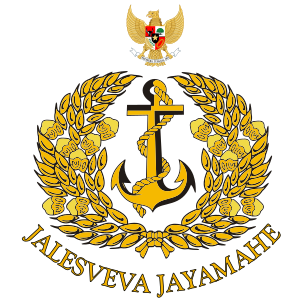
The Indonesian Navy is the naval branch of the Indonesian National Armed Forces. It was founded on 10 September 1945 and has a role to patrol Indonesia's lengthy coastline, to enforce and patrol the territorial waters and Exclusive Economic Zone (EEZ) of Indonesia, to protect Indonesia's maritime strategic interests, to protect the islands surrounding Indonesia, and to defend against seaborne threats.
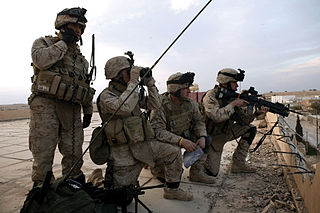
Air Naval Gunfire Liaison Company (ANGLICO) is an airborne fire support and liaison unit of the United States Marine Corps. The mission of ANGLICO is "To provide Marine Air-Ground Task Force (MAGTF) Commanders a liaison capability to plan, coordinate, and conduct terminal control of fires in support of joint, allied, and coalition forces." Per this mission statement, ANGLICOs are not designed to support U.S. Marine Corps maneuver elements. Instead, the doctrinal purpose of ANGLICO is to provide fire support and coordination in support of units adjacent to the MAGTF.

The Combined Action Program was a United States Marine Corps operational initiative implemented in the Vietnam War and proved to be one of the most effective counterinsurgency tools developed during that conflict. Operating from 1965 to 1971, this program was characterized by the placement of a thirteen-member Marine rifle squad, augmented by a U.S. Navy Corpsman and strengthened by a Vietnamese militia platoon of older youth and elderly men, in or adjacent to a rural Vietnamese hamlet. In most cases, the Popular Forces militia members were residents of the hamlet who were either too young or too old to be drafted into the Army of the Republic of Vietnam (ARVN) or the Regional Forces. The entire unit of American Marines and Popular Forces militia members together was designated as a Combined Action Platoon (CAP).
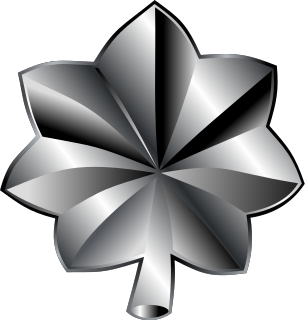
In the United States Army, U.S. Marine Corps, U.S. Air Force and U.S. Space Force, lieutenant colonel is a field grade officer rank, just above the rank of major and just below the rank of colonel. It is equivalent to the naval rank of commander in the other uniformed services.
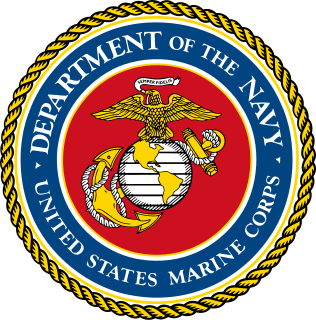
The United States Marine Corps is organized within the Department of the Navy, which is led by the Secretary of the Navy (SECNAV). The most senior Marine commissioned officer is the Commandant of the Marine Corps, responsible for organizing, recruiting, training, and equipping the Marine Corps so that it is ready for operation under the command of the unified combatant commanders. The Marine Corps is organized into four principal subdivisions: Headquarters Marine Corps, the Operating Forces, the Supporting Establishment, and the Marine Forces Reserve.

1st Civil Affairs Group is a civil affairs (CA) unit of the United States Marine Corps based at Camp Pendleton, California. It is one of three civil affairs units in the Marine Corps, all of which are reserve units. 1st CAG tends to support I Marine Expeditionary Force activities.
Public Affairs is a term for the formal offices of the branches of the United States Department of Defense whose purpose is to deal with the media and community issues. The term is also used for numerous media relations offices that are created by the U.S. military for more specific limited purposes. Public affairs offices are staffed by a combination of officers, enlisted personnel, civilian officials and contract professionals.

4th Civil Affairs Group is a civil affairs (CA) unit of the United States Marine Corps. It is based in Hialeah, FL. For information on 4th CAG prior to 2012, see 2D CAG, which was formed out of the original 4th CAG in Washington D.C. It is one of only four civil affairs groups in the Marine Corps, all of which are reserve units. 4th CAG was the first civil affairs group in the Marine Corps and mostly supports II MEF.
Hispanics and Latinos in the United States Marine Corps, such as Private France Silva who during the Boxer Rebellion became the first Marine of the thirteen Marines of Latin American descent to be awarded the Medal of Honor, and Private First Class Guy Gabaldon who is credited with capturing over 1,000 enemy soldiers and civilians during World War II, have distinguished themselves in combat. Latinos have participated as members of the United States Marine Corps in the Boxer Rebellion, World War I, the American intervention in Latin America also known as the Banana Wars, World War II, the Korean War, the Vietnam War, the Gulf War and most recently in the military campaigns of Afghanistan and Iraq.

6th Civil Affairs Group was a United States Marine Corps Civil Affairs unit: organized, trained and equipped on Camp Lejeune, North Carolina from April to September 2005; conducted civil-military operations and civil affairs activities in al-Anbar from September 2005 to March 2006; and redeployed and deactivated in the United States from March to April 2006.
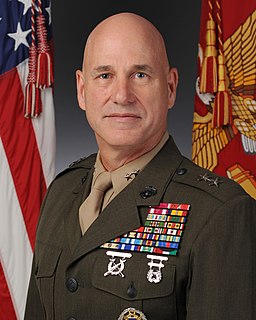
Paul W. Brier is a retired United States Marine Corps major general. A combat veteran of the Persian Gulf, Iraq, and Afghanistan wars, he retired on 31 December 2016, completing 36 years of military service. He holds a BS in Civil Engineering from the Virginia Military Institute and a Master of Strategic Studies from the U.S. Army War College. A 2012 CAPSTONE Fellow at the National Defense University, he is a graduate of the Defense Resources Management Institute, Naval Postgraduate School; Air War College; Joint Forces Staff College; and Marine Corps Command and Staff College.











